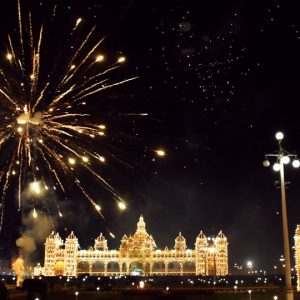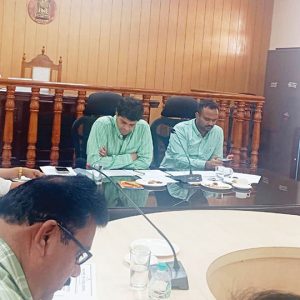By Girija Madhavan
A recent video on my WhatsApp sent my mind scrambling down the staircase of memory. It showed a picture of the Yadavagiri residential area of Mysore, when it was still designated as an ‘Extension’; a word that was compulsory on postal addresses in the late 1940s.
The video also mentioned that there were only five roads in the area… and a few houses too.
My father’s retirement home in Yadavagiri was built by the architect Rama Rao and we moved into it in 1948. It was a bold style of architecture then, square with broad chajjhas [overhangs] and wide windows.

On the brow of the hill stood a two-storey house belonging to the Brahmappa-Thavanappa business family of Mysore, also built by Rama Rao. Like my childhood home, it no longer exists but a similar bungalow still stands on Vivekananda Road.
The landscape then was very different from its crowded appearance now. I have no photographs, only two or three paintings by my mother to describe those times. Her painting of Vivekananda Road and Cheluvamba Park shows the arch with a flowering creeper at the entrance, the wide sweep of the Park itself and even a glimpse of the DC’s office, ‘Jaladarshini’ in the far distance.
Sadly that picture was stolen from me and this photo alone remains. The picture of the gulmohar lined avenue being swept by two women workers of the Corporation is of a later date, maybe 1952.
To the right of my parental home was a charming house with red pillars on a wide veranda [kempu khambada mane]. A spreading gulmohar tree picked up the red accents when in bloom. A more conventional residence stood to the left. I was homeschooled after a severe illness and was a lonely ten year old, very curious about the world at large and neighbours in particular.

An American family moved into the house on our left. Mr. Shepherd and Mrs. Wilma Shepherd were Seventh Day Adventist Missionaries. Two little blonde daughters, Kathleen and Cecelia and a dachshund dog named Tippu completed the family. Mr. Shepherd called on us; a tall, big built man with a rounded face, brown hair and rimless glasses.
Kathleen and Cecelia were allowed to visit us for a short time once in a way to watch my infant nephew being hand fed Ragi Ganji. “Oh! Show us how you pour it down his throat.”
Their father, a strict parent, sometimes used a light cane to enforce discipline. Poor Tippu was also not spared on occasion. Wilma followed her American routines. Cleaning Day [with mops and dusters], Washing Day [pegging the laundry on lines in the backyard]. She worked hard till the Sabbath. She would sometimes drop in to meet Mukta.
During Vinayaka Chaturthi she saw Mukta’s artistic rangoli, the banana fronds and mango leaf garlands at the front entrance. She asked Mukta, “You are so educated, why do you follow these old practices?” Mukta replied “Oh! Don’t you decorate fir trees and hang up mistletoe at Christmas”?
After they left, other foreign neighbours moved into Yadavagiri. A young French family rented the red pillared house. Christian Revel, a timber businessman, his wife Simone and two small sons, named Ananda and Arjuna, came to live in Mysore.

They also had connections to Pondicherry and Tellicherry where their main timber business was located. Christian spoke fluent English, but not Simone or the children. Broken English, smiles and gestures made for sweet communication.
Christian, a Theosophist, soon began to hold informal weekly gatherings of local people at home to discuss Theosophy. He would sit cross legged on the carpeted floor, the others grouped around him. What began as just a few people became a larger group.
An interest in the French language also drew people to the Revels. Sri K. Iyengar was a revered scholar in Mysore. A tall man, he was stately in his crisp Panchkachcham, closed collar coat, Mysore Peta, a perfectly etched red Namam accentuating his aquiline features.
A sharp intellect, he had studied French grammar deeply on his own and could read fluently. However, his ardent wish was to actually converse in the language. So he came and met the Revels. Sadly, their colloquial French was as unintelligible to him as his formal speech and accent was to them.
Simone came to say goodbye and left with the children, our first inkling that perhaps all was not well in the timber business. Christian’s visits also ceased after a while. Our friendly neighbours relocated. But left behind happy memories of another culture and people.








Recent Comments